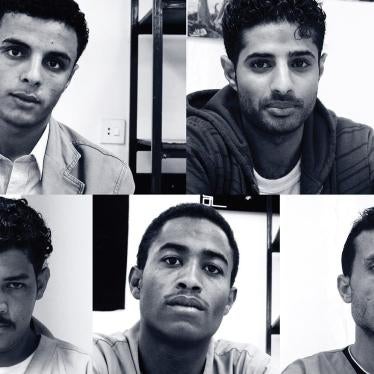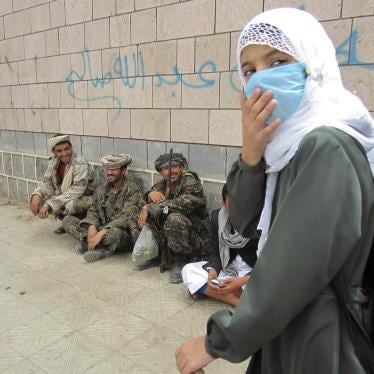The first UN International Day of the Girl, designed to promote education for young women everywhere, is the perfect opportunity to finally stamp out child marriage, writes Gauri van Gulik from Human Rights Watch.
When she was 16 years old, Habibe’s mother and father forced her to marry her 19 year-old cousin. By the time I met her in Turkey, she was 40 and had finally escaped decades of beatings, hard work and rape. She hardly mentioned that she had been forced to marry as a child. We talked about domestic violence and how the police failed to respond to her cries for help. Her marriage, however, had profoundly shape her life. It was only later that I realized how much child marriage and violence in the home are connected.
Globally, roughly one out of seven girls is married before the age of 15, and an even larger number before 18. The United Nations Population Fund (UNFPA) will reveal later today the latest child bride figures. Although early marriage affects boys and girls, it has a disproportionate effect on girls, limiting their opportunities for education and exposing them to the risks of early pregnancy and childbirth, the leading causes of death for girls aged 15 to 19 in developing countries. The World Health Organization (WHO) found in a multi-country survey on violence against women that married girls between 15 and 19 are more likely to experience domestic violence than older married women.
To be sure, many marriages in which one spouse is below the age of 18 are not violent. But girls who are married young face a perfect storm of risk factors that significantly increase their chance of suffering domestic violence.
First, girls who are married young have lower levels of education, which places them at a much greater risk of domestic violence from their spouses than older, more educated women. Power and authority in the household is usually held by men and older women, and this can place new young brides, at greater risk of abuse and violence. Girls and women interviewed by Human Rights Watch in Yemen said that they were verbally or physically assaulted by their husbands, in-laws, and other members of the husband’s household. Rhadia was married at 16, and has lived with her husband and in-laws for over eight years. She told Human Rights Watch: “He upsets me a lot, and he beats me.... I can’t leave now because of my children...They [my family and in-laws] ruined me. They ruined my life.”
The risk of domestic violence faced by young girls also appears linked to a high risk of suffering marital rape and other forms of sexual violence. In Yemen, Human Rights Watch documented several cases. Elham Mahdi Al-Assi, aged 12, died of internal bleeding three days after she was married. Elham was married to a man twice her age. Medical reports indicate that Elham died from severe bleeding caused by tears to her genital and anal area from sexual activity. Marital rape is still not criminalised in many countries around the world. In others it is now recognized or no longer exempted from rape laws, but this is a relatively recent development. Until 1976, marital rape was legal in every state in the United States. The House of Lords only effectively removed the exemption for spouses to rape in the United Kingdom in 1991, in the R v R case and in Turkey, where I met Habibe, marital rape was only criminalized in 2005 when the new penal code came into force.
Action plan for governments
We certainly don’t have all the answers yet, but here is the bare minimum governments need to do to start ending child marriage and protect women and girls from violence:
Governments have to adopt and implement legislation that sets the minimum age for marriage at 18, as recommended by the UN Committee on the Rights of the Child, and include requirements for the full and meaningful consent of both spouses. As limited as legislation alone is, and it certainly is only the beginning, where countries put a higher minimum legal age of marriage in place, the incidence of early marriage is lower. We have to start there.
This should never mean girls lose out on maintenance pay or other entitlements and should not have other negative consequences for the girls or their children. Governments have to prioritize continued education and vocational training opportunities for married girls and women. And finally, when a girl does manage to escape a violent marriage, there should be shelters and the police should respond effectively to protect her.
This first UN Day of the Girl should highlight what I’ve learned from Habibe and others: child marriage can be the starting point of a lifelong struggle - a battle to go to school, a battle to stay healthy, a battle to raise children in a safe home, and a battle to survive. Only if governments see women’s lives as the complicated realities they are, can we start turning this tide. Habibe had to do it by herself. Let’s hope other girls don’t have to wait 24 years.







